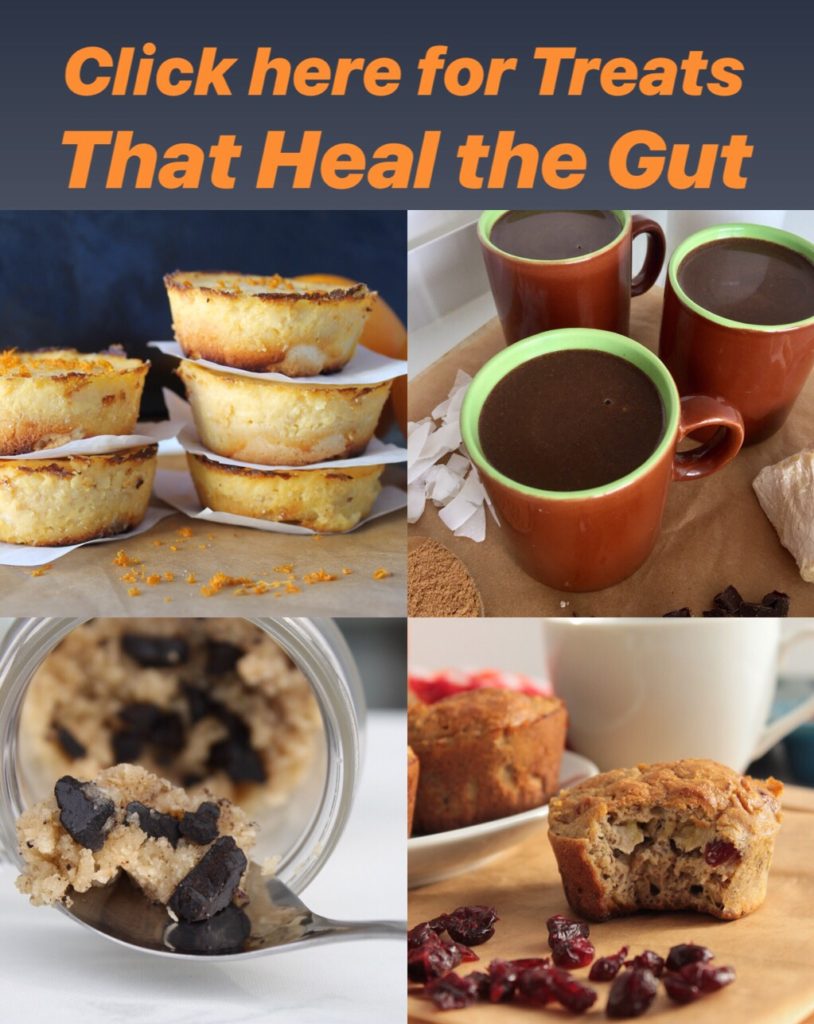It’s not news that dairy causes digestive problems for so many people but there are also a lot of misconceptions about dairy. Not all dairy is created equal. And not all dairy sensitivities are forever.

In this article you’ll learn everything you need to know about dairy, including how to reverse or minimize your dairy intolerance and how to choose the healthiest kind if you just gotta have it. I’ll also tell you about the healthiest dairy alternatives if you are super allergic to all forms of dairy.
After reading this article, you’ll know:
Who has problems with dairy and why?
What are the healthiest and unhealthiest form of dairy and dairy substitutes?
What causes dairy intolerance and how to reverse or reduce your reaction to it?
Who has a problem with dairy?
People believe you either have a problem with diary or you don’t. That’s not the case. Dairy intolerance isn’t that black or white, it’s more of a continuum. Some people on that continuum are so severely allergic they can’t have it in any form, while others have such a slight intolerance that they never even notice. Most people are somewhere in between and their reaction can change depending on what else they ate and the quantity and quality of diary consumed.
There are four reasons that dairy is hard to digest. Some you may already know, and others may surprise you.
Lactose: This hard to digest milk sugar is what’s responsible for causing gas and bloating in a majority of the population. I have seen rough estimates that close to 75 percent of the population has trouble digesting lactose.
Casein: Eighty percent of the protein in milk is made up of casein. Casein is used in the production of cheese. And because of it’s sticky and binding properties it’s also used to bind safety matches and make fast drying paint and glue. Some early plastics were based in casein. Doesn’t sound too edible does it?
Casein has a similar molecular structure to gluten, which is one of the biggest food allergens today. Some people claim that a casein and gluten free diet can help reduce the symptoms of autism but it hasn’t been proven.
Lectins: Not many people known about lectins because they haven’t gotten much press yet outside of the nutrition world. Lectins are molecules that contain both protein and sugar and serve as hard to digest pesticides intended to give tummy aches to the predators who eat them. This is nature’s way of preventing predators (us) from gorging on lectin-rich foods.
Foods highest in lectins are whole grains, peanuts, kidney beans and soybeans. Lectins are linked to food allergies and sensitivities like celiac disease. Lectins are even stickier than casein and can bind to intestinal lining to cause leaky gut syndrome, which in turn causes autoimmune issues and inflammation.
Lack of beneficial bacteria: The effect of beneficial bacteria on our health and digestion is complicated, not well understood and currently the subject of much research. There have been findings that a low level or lack of certain beneficial bacteria in the gut is a major cause of dairy sensitivities. Without plenty of this bacteria, digesting dairy is tough for the body. I’ll talk more about this later in this article.
Dairy: The least healthy to healthiest
Conventional milk and cheese: The least healthy form of dairy is milk and cheese from conventional cows. Cheese is worse than milk because it’s a highly concentrated form of milk. It’s higher in lactose, casein and lectins. It also has a higher concentration of the hormones, pesticides and antibiotics used to raise and feed cows. Milk from cows that eat lots of gluten-rich GMO grains can activate gluten allergies in some people.
Organic milk from grass fed cows: This is a much healthier alternative to conventional milk. The grass eaten by these cows produces more omega three fatty acids in their milk. It’s also free of hormones, chemicals and pesticides. High levels of casein, lectins and lactose still remain.
Raw, organic milk from grass fed cows: This milk is a bit controversial because it isn’t pasteurized and there’s a small risk of getting sick from pathogens that pasteurization kills. However, pasteurization also kills enzymes and live nutrients that give raw milk its maximum health benefits.
Yogurt: This is a healthier form of dairy because it’s fermented. The fermentation process eats up lactose because beneficial bacteria use it as food. Fermentation also helps break down the hard to digest properties of both lectins and casein so it’s less work for the body to process. Because yogurt comes with a rich collection of it’s own bacteria, it’s much easier to digest than milk, especially for people who lack their own bacteria to digest dairy. Plain (sugar-free), organic yogurt is sometimes tolerated by people who are sensitive to dairy.
Clarified Butter/Ghee: Ghee is the Indian name for clarified butter and is prized in Indian medicine for it’s cleansing and detoxifying properties (especially when mixed with herbs and spices). Ghee is sold in stores and is also easy to make. Simply boil down butter until all the lactose and liquid evaporates and only the oily part remains.
After the boiling process ghee become much more like oil than butter. It also tastes different and is lactose-free. The casein and lectins are also slightly broken down by the boiling process. Just like yogurt, some people can tolerate ghee when they can’t have regular dairy. Of course if a dairy allergy is severe, no form of dairy will be tolerated.
Sheep dairy: The lactose and fat molecules in sheep dairy are smaller and easier to digest. Not only is there less fat in sheep diary but it’s a healthier type of fat with cancer fighting properties. It is also higher in essential vitamins than cow dairy.

According to the list above, the healthiest form of dairy is raw, organic sheep’s milk yogurt. If you can’t find any for sale, you can make your own yogurt with raw or regular sheep’s milk. Goat milk is a good substitute for sheep’s milk, however sheep’s milk is easier to digest than goat’s milk.
Dairy substitutes
Least healthy…
Soy milk: This is the least healthy dairy substitute because it contains lots of lectins and other hard to digest carbs that are found in beans. And soy is controversial because it can raise estrogen levels, which has been tied to increased risk of breast cancer.
Nut milks are better than soy but can also be hard to digest and can be constipating (they were for me). Rice milk is very high in sugar and low in nutrition.
Healthiest…
Hemp milk: The healthiest milk alternatives is unsweetened hemp milk because it is high in omega 3 fatty acids, vitamins and minerals. It is low in lectins and it is easy to make it yourself.
Coconut milk: Coconut milk is prized for it’s antiviral and antibacterial properties. It contains healthy fat that can lower cholesterol and is very high in iron. It’s rich and yummy too.
Can dairy allergies be reversed?
I have personally reversed my severe dairy sensitivity and have heard from others who have done the same. Here is the process that we all shared to reduce our reaction to dairy.
The first step is to eliminate dairy all together.
Because dairy sensitivities are linked to bacterial balance in the gut, the second step is to increase the balance of beneficial bacteria in the gut. To do this, eat more fermented foods like sauerkraut, miso soup or drink fermented beverages like Kombucha. Also, Natren makes some of the best probiotic supplements that I’ve come across.
Also, lowering sugar content in your diet and increasing fiber and rest can help bolster good bacteria.
I avoided dairy for a year and a half, while eating a diet low in sugar, and high in fiber, protein and fermented veggies. After that I was able to tolerate dairy without much tummy trouble. When I started back on dairy I choose the healthiest options such as goat/sheep yogurt and raw, organic, grass fed milk.
My dairy experiment
Since I healed myself I’ve been eating dairy for years and I never noticed a problem with it. But I’ve been reading so much about dairy that I began to wonder and decided to test it out.
I ate three large bowels of cereal with organic milk. I’m not used to consuming milk in this quantity and I hardly ever eat cereal.
Soon after, I experienced uncomfortable and intense gas and bloating. It taught me that dairy is only OK if I have it in small quantities. Because I’m not used to eating cereal, the bloating could also have been intensified by the gluten in the wheat flakes.
After that experiment I decided to give up cow dairy all together. I think I’ll feel better without it. It’s going to be hard because yogurt is my favorite food. I crave it and eat it everyday. I consider it healthy but the only way to find out for sure is to test it. And sadly there is no good alternative for yogurt. The coconut version is just not the same.
I’ve read that people often have strong cravings for foods that cause inflammation in their body. This new experiment of eliminating dairy and then eventually adding it back in will show me how dairy is effecting me. I’ll keep you posted!
Meanwhile, tell me in the comments below, what your experiences with dairy have been? I would love to hear your opinion or thoughts.
 Angela Privin is proof that IBS is NOT an incurable disease or a disease at all. IBS is a body out of balance. It’s an invitation for change. After solving her own IBS mystery more than a decade ago Angela trained as a health coach to help others.
Angela Privin is proof that IBS is NOT an incurable disease or a disease at all. IBS is a body out of balance. It’s an invitation for change. After solving her own IBS mystery more than a decade ago Angela trained as a health coach to help others.
Angela uses both science and intuition to help people figure out what’s out of balance in their body. She works with lab tests, dietary changes, supplementation and nervous system rebalancing. Get help rebalancing your digestive system and solving your IBS mystery here.







8 Comments